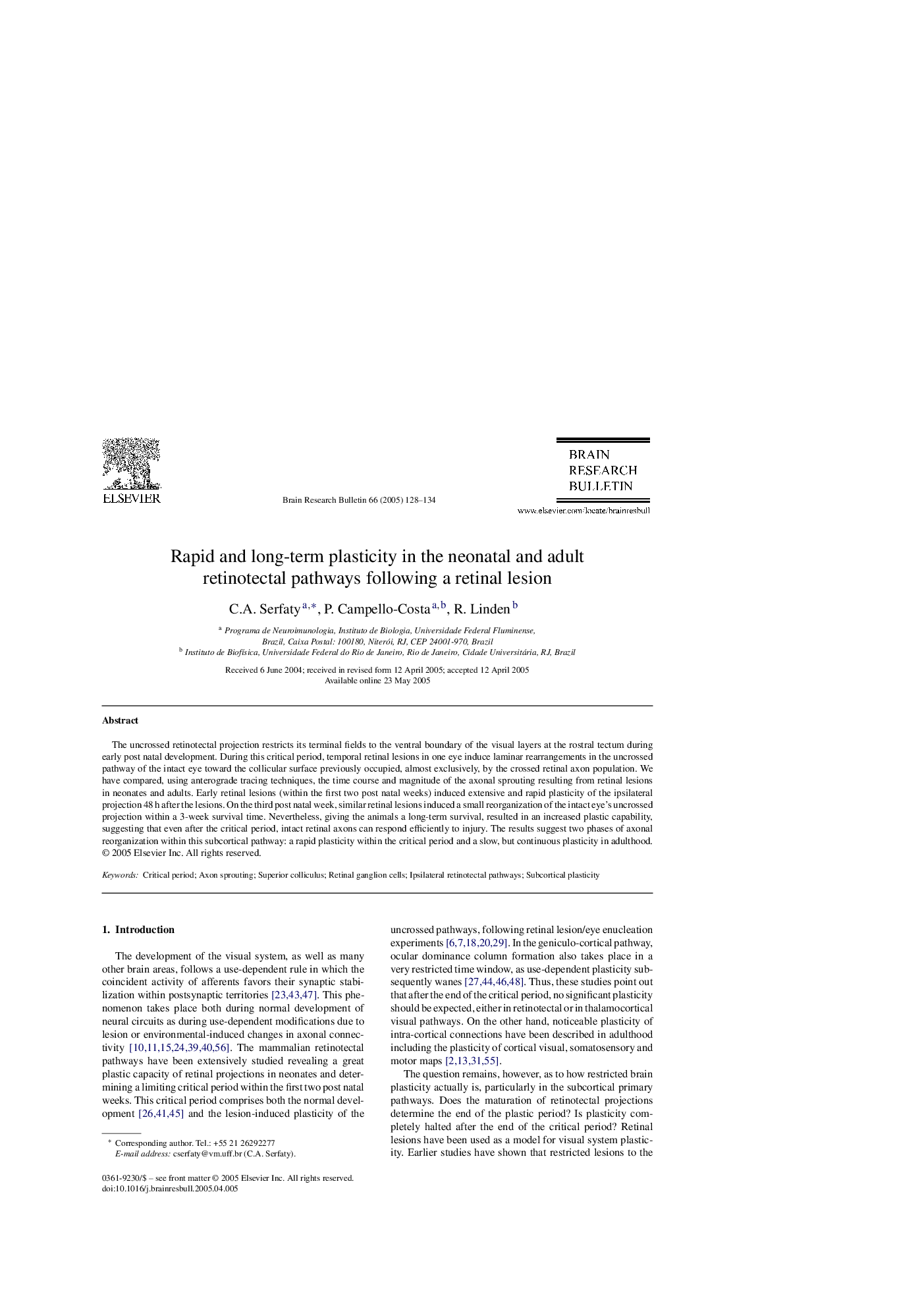| Article ID | Journal | Published Year | Pages | File Type |
|---|---|---|---|---|
| 9409526 | Brain Research Bulletin | 2005 | 7 Pages |
Abstract
The uncrossed retinotectal projection restricts its terminal fields to the ventral boundary of the visual layers at the rostral tectum during early post natal development. During this critical period, temporal retinal lesions in one eye induce laminar rearrangements in the uncrossed pathway of the intact eye toward the collicular surface previously occupied, almost exclusively, by the crossed retinal axon population. We have compared, using anterograde tracing techniques, the time course and magnitude of the axonal sprouting resulting from retinal lesions in neonates and adults. Early retinal lesions (within the first two post natal weeks) induced extensive and rapid plasticity of the ipsilateral projection 48Â h after the lesions. On the third post natal week, similar retinal lesions induced a small reorganization of the intact eye's uncrossed projection within a 3-week survival time. Nevertheless, giving the animals a long-term survival, resulted in an increased plastic capability, suggesting that even after the critical period, intact retinal axons can respond efficiently to injury. The results suggest two phases of axonal reorganization within this subcortical pathway: a rapid plasticity within the critical period and a slow, but continuous plasticity in adulthood.
Related Topics
Life Sciences
Neuroscience
Cellular and Molecular Neuroscience
Authors
C.A. Serfaty, P. Campello-Costa, R. Linden,
